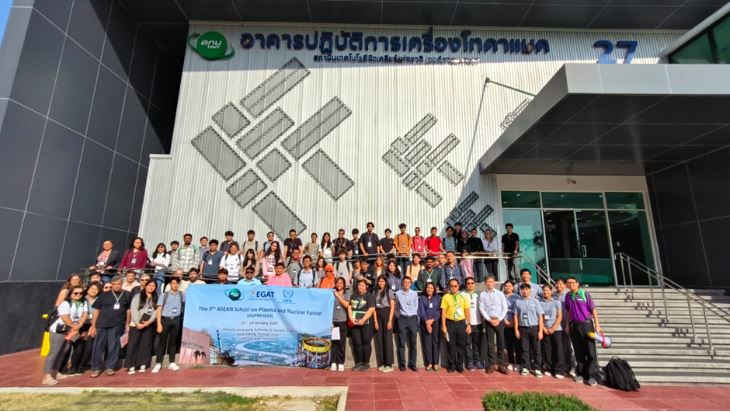
During their break, three students from the Department of Nuclear Engineering and Physics at UGM embarked on an educational adventure by participating in a winter school jointly organized by the Thailand Institute of Nuclear Technology (TINT), the Electric Generator Authority of Thailand (EGAT), and the International Atomic Energy Agency (IAEA).
Rizal Alfariji, Siti Puput Nurhidayah, and Aldino Putra Andeaz were among the eager participants at the 9th ASEAN School on Plasma and Nuclear Fusion (ASPNF) 2024, held at the Bang Pakong Training Center, Chachoengsao, Thailand.
“This experience offers invaluable opportunities for students to delve deeper into plasma and nuclear fusion science,” expressed Rizal Alfariji on their enlightening journey on Thursday (Feb. 1).
Alfariji acknowledged that while their curriculum typically focuses on nuclear fission reactors, the ASPNF 2024, spanning from Jan. 15 to 19, 2024, provided a unique platform to explore plasma and nuclear fusion further.
Their active participation showcased their commitment to advancing their nuclear science proficiency, underscoring their enthusiasm for global knowledge exploration.
“ASPNF 2024 annually attracts experts and students from diverse Southeast Asian nations like Thailand, the Philippines, Singapore, and Indonesia. This gathering is a platform for student groups in Nuclear Engineering to deepen their understanding of various facets of plasma and nuclear fusion science,” Alfariji elaborated.
Siti Puput Nurhidayah highlighted the enriching five-day program with interactive learning sessions, including a comprehensive examination of plasma’s fundamental theory and its application in advancing nuclear fusion technology.
Participants were immersed in a dynamic learning environment with sessions covering topics like fusion reactor control, particle transport, magnetic confinement, tokamak introduction, and diagnostic challenges in nuclear fusion.
“ASPNF 2024 adopted a blended format comprising traditional and hands-on sessions, allowing participants to delve into modules under expert guidance during classroom sessions,” she elaborated.
Aldino Putra Andeaz expressed gratitude for the experience, emphasizing how they maximized this opportunity to augment their knowledge through interactive learning sessions featuring cutting-edge computer programs in plasma and nuclear fusion research.
Furthermore, ASPNF attendees were privileged to conduct experiments utilizing the Thailand Tokamak-1 (TT-1) device, Southeast Asia’s pioneering tokamak.
“Given the absence of a tokamak facility in Indonesia, this opportunity was truly invaluable. Moreover, participants actively engaged in international discussions and practical analyses during the sessions,” he added.
Andeaz emphasized the significance of the knowledge exchange among participants from various countries, accentuating how the exchange of ideas fostered an environment ripe for innovation and intellectual growth.
In this vibrant setting, UGM’s Nuclear Engineering students gained fresh insights into the latest advancements in plasma and nuclear fusion science and expanded their professional network, forging connections with peers and experts from Southeast Asia.
Author: Agung Nugroho

